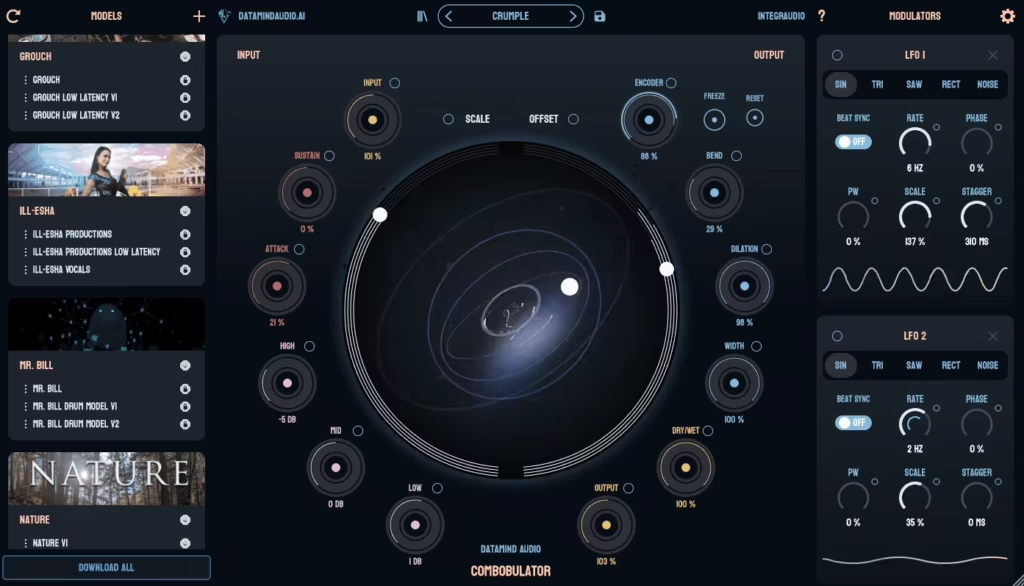Let’s talk about some of the best AI plugins for mixing and mastering engineers as well as sound designers!
It’s wild how fast AI has moved from being a buzzword to something that actually makes music better. A few years ago, I was skeptical – most so-called “AI tools” felt like toys or marketing experiments. But lately, we’ve hit a point where these plugins don’t just automate things – they actually listen, analyze, and respond to sound like a collaborator would!
Some of them even surprise me with ideas I wouldn’t have thought of myself.
With that being said, here are the some of the best AI-driven plugins that have genuinely reshaped my sessions – not just time-savers, but creative extensions of my workflow.
1. Datamind Audio Combobulator (Neural Synth)
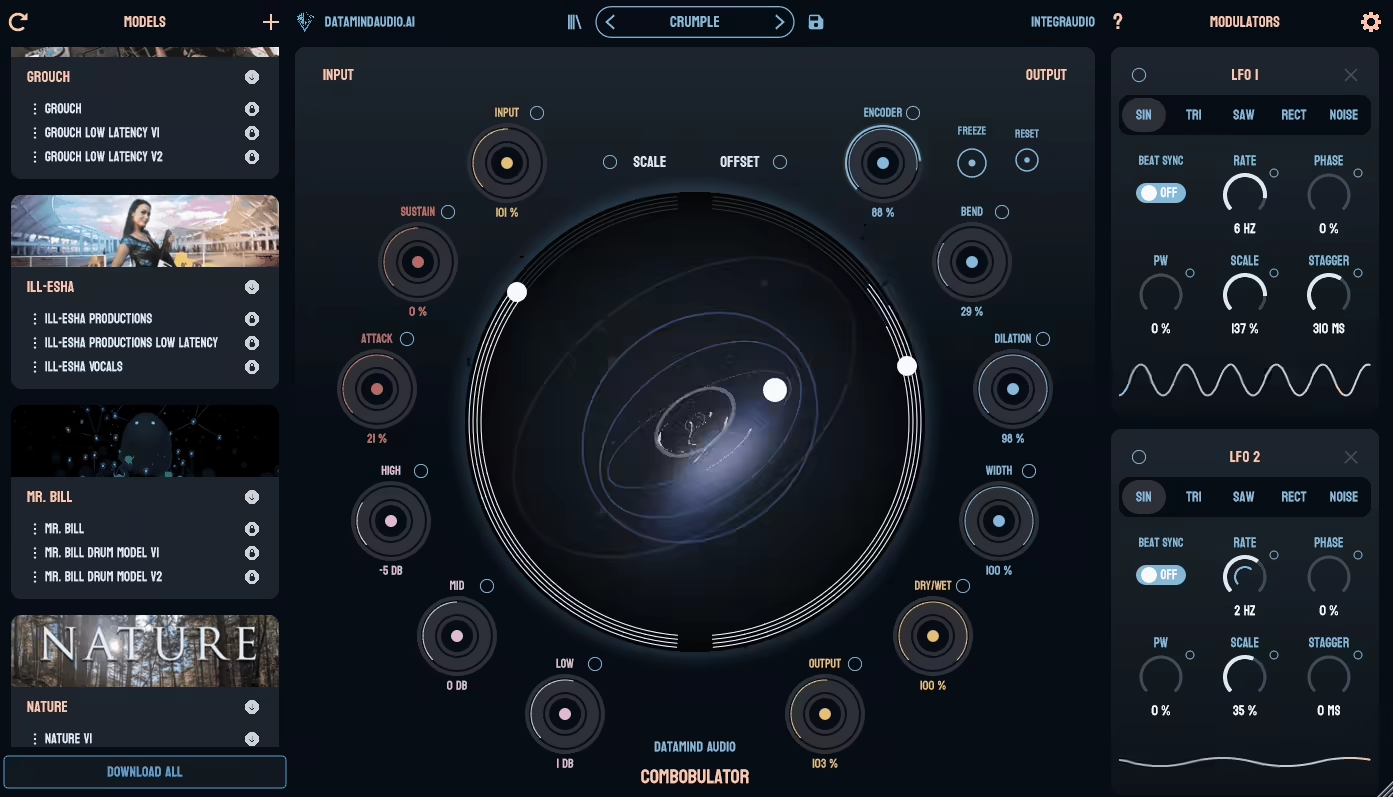
I’ve been spending some time with Datamind Audio’s Combobulator, and it’s a pretty different kind of synth. Instead of using regular oscillators or samples, it runs on a neural network that generates sound from learned data. In simple terms, it “imagines” tones rather than reproducing them. That makes it a bit unpredictable at first, but once I started exploring how its neural models respond to modulation and input, it became easier to control.
The sound character sits somewhere between digital and organic. I’ve made pads that feel slightly unstable, basses that shift in texture as they play, and atmospheric tones that react nicely to velocity and aftertouch. It’s not a synth for clean, consistent sounds, but that’s what I like about it. It gives me results I wouldn’t normally think to design myself.
The interface is simple enough that I don’t need to dig through menus, and the modulation system is quick to set up. Overall, Combobulator feels like a creative tool for moments when I want to break patterns and find something unexpected without overcomplicating the process. Also, good news is that it comes with trial, so definitely check that out!
2. Algonaut Atlas 2 (Sampler & sequencer)
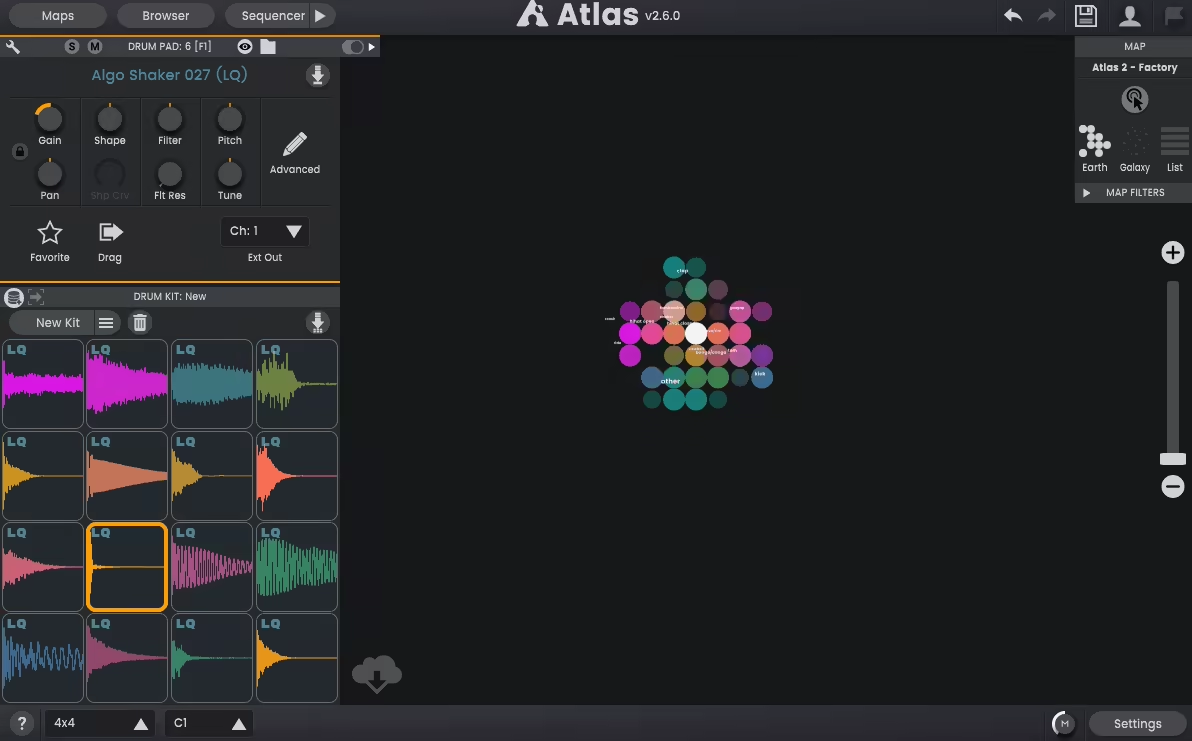
Atlas 2 automatically analyzes my sample library and maps everything visually on a circular “map,” so I can drag sounds straight into its pads. Seeing my samples grouped by tone and texture speeds up my workflow more than I expected.
When it comes to built-in sequencer, it’s straightforward and responsive. You can randomize hits within sensible limits – it keeps grooves human without making them messy. The step automation is great for quick variation, and having all that inside one plugin means I don’t need to jump back and forth between DAW lanes.
Atlas 2’s sound engine itself is clean and transparent, which is what I want from a drum sampler. It doesn’t color my sounds unless I add filters or envelopes. It also plays nicely with MIDI controllers, which makes it easy to tap in patterns. Overall, it’s not trying to be flashy; it’s a sampler that respects your time and keeps you focused on making beats, not managing files.
3. LANDR Mastering Plugin PRO (Master chain)
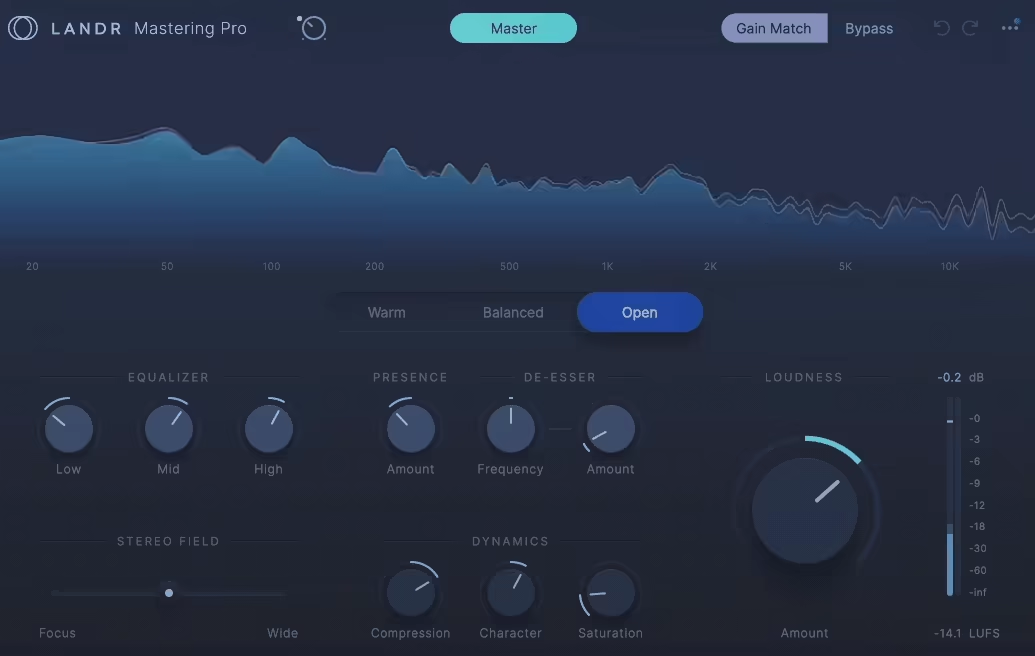
When it comes to quick and accurate mastering references, LANDR Mastering Plugin PRO has evolved far beyond its early “auto-master” reputation. The neural core now analyzes your mix with a 5-band spectral model and builds an adaptive EQ, compressor, and limiter chain on the fly.
Switching to “Punchy” mode boosts sub dynamics around 60-100 Hz and slightly tightens stereo imaging, while “Transparent” mode keeps transients intact but evens midrange response. It doesn’t color your mix; it simply optimizes it. I like using it between rough and final stages – it gives a realistic preview of how a master will translate.
4. Datamind Audio Concatenator (AI Neural Synth)
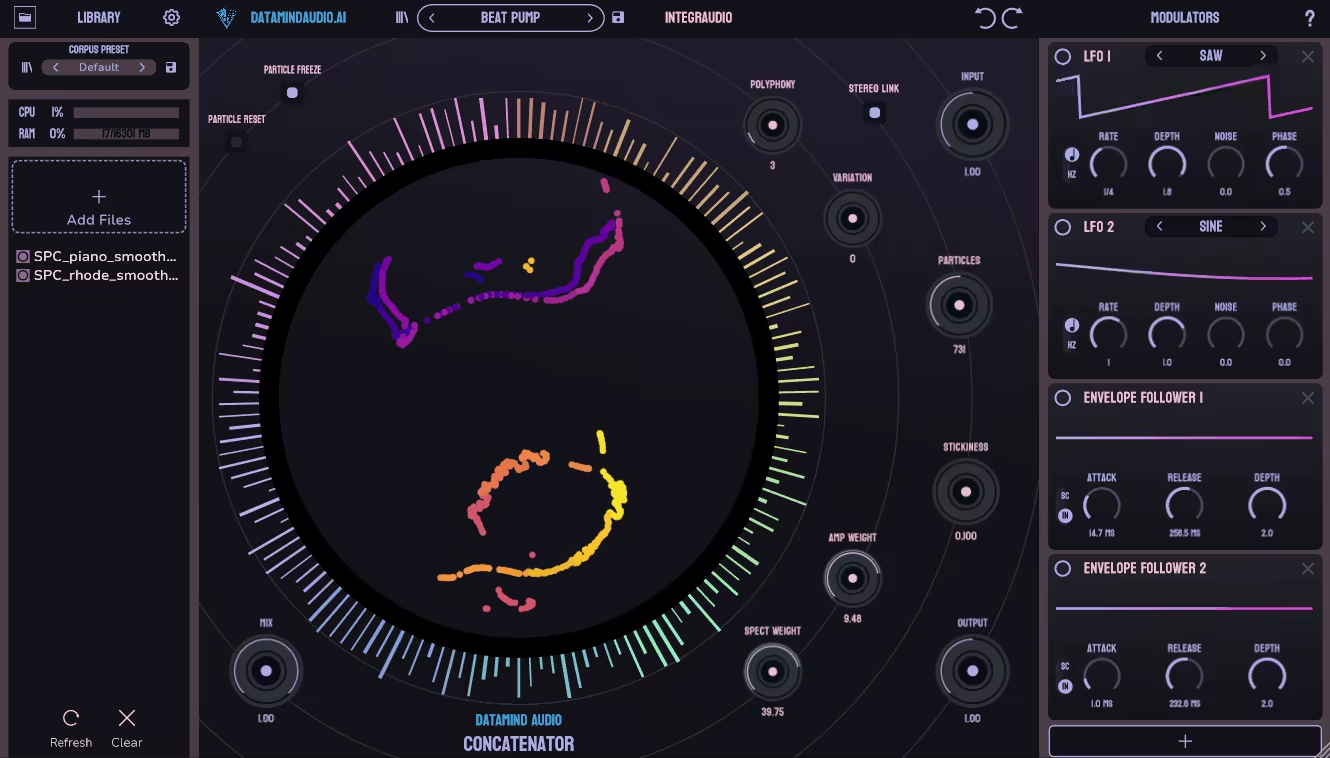
Some synths learn your playing style, but few adapt like Datamind Audio’s Concatenator. It’s a neural synth that rebuilds sound by linking audio fragments predicted from a learned dataset, rather than playing back recorded samples.
Each “grain” lasts between 20 – 80 ms and is chosen contextually to continue the previous harmonic motion. The result feels continuous – no loops, no steps, just seamless texture.
I’ve used it for evolving ambient layers that morph without repetition. There’s also an AI-driven modulation mode where envelope curves influence neural weight selection, letting performance gestures literally reshape synthesis. It’s CPU-heavy but musically unpredictable in the best way.
5. Dreamtonics Vocoflex
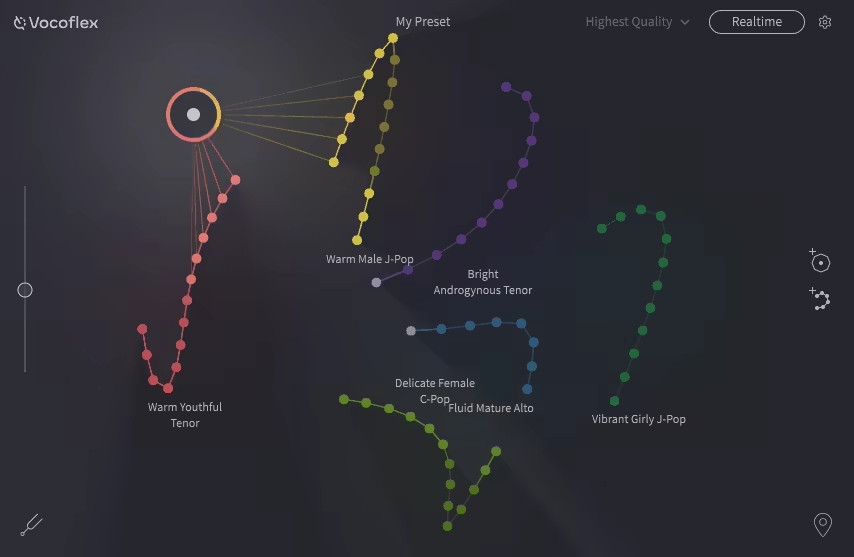
The vocal world changed once Dreamtonics released Vocoflex. It’s an AI morphing processor that reshapes vocal timbre through spectral envelope transfer, maintaining pitch and dynamics with almost no latency. Feed it a dry vocal, pick a target timbre like “airy pop” or “raspy male,” and it rebuilds the formant behavior in real time.
The output remains natural up to 70% morphing depth; beyond that, it becomes more synthetic, which actually works well for hyperpop or electronic textures. I’ve found it invaluable for layering vocal harmonies that need contrast without re-recording.
6. sonible smart:EQ 4 (Equalizer)
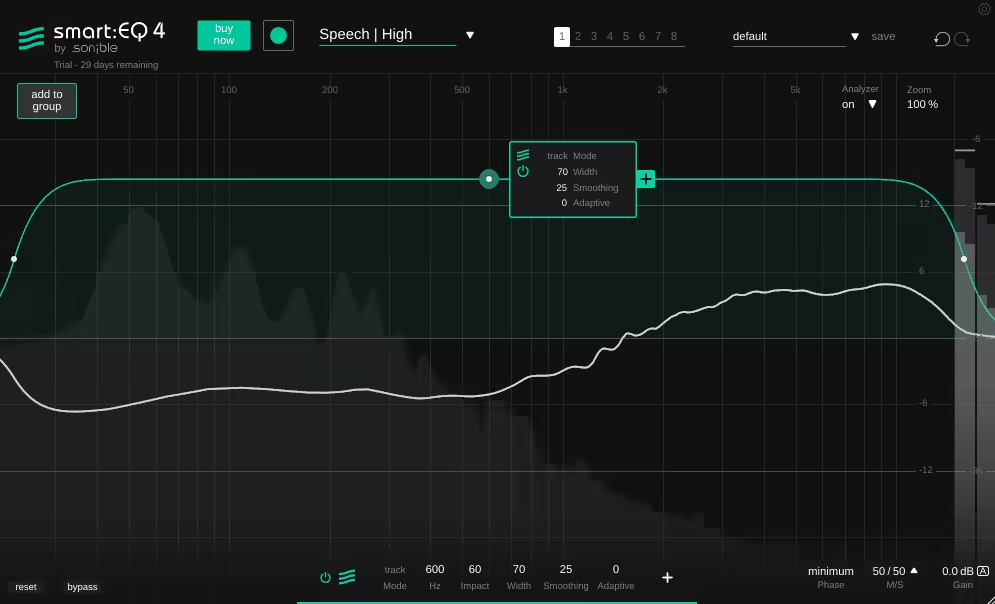
I’ve used a lot of automatic EQs, but smart:EQ 4 by Sonible still manages to feel musical rather than clinical. It doesn’t simply “flatten” a curve; it continuously analyzes the input spectrum using a 2048-point FFT and updates gain nodes dynamically within a ±12 dB range.
What’s brilliant this time is the new Group Adaptation mode – up to eight instances talk to each other across your mix, reducing conflicting frequencies in real time. I tested it across drums, bass, and vocals, and the tonal balance self-adjusted like an invisible engineer riding EQs by ear. It’s subtle, transparent, and smart enough to trust during mix sessions.
7. Baby Audio TAIP (Tape)
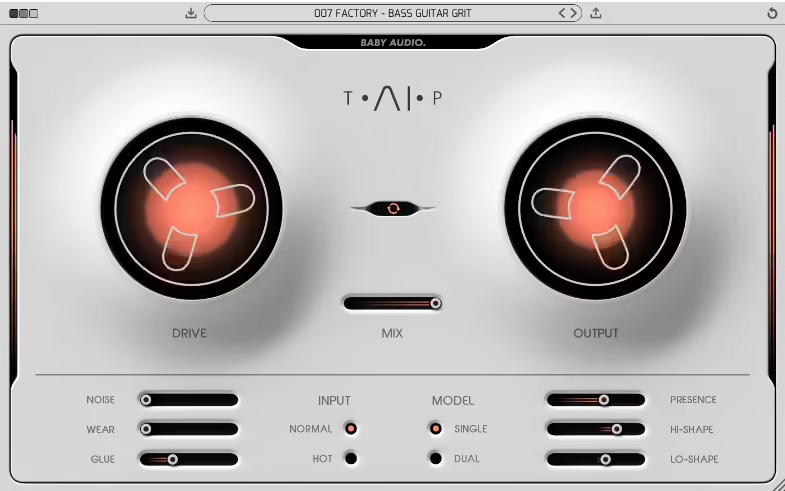
You can instantly hear the difference when TAIP from Baby Audio is on a drum bus. Unlike static saturation, it uses AI-based dynamic convolution to recreate how tape reacts to transients. Drive isn’t just gain – it actually modifies bias current behavior, so the tone thickens as input energy increases.
Flutter and wear parameters simulate subtle wow fluctuations that move phase slightly, giving stereo depth. The harmonic response peaks gently around 2.5 kHz, and when pushed, adds that familiar soft clipping tape “bloom.” What I like most is how it never sounds identical twice – like real tape, it shifts and breathes.
This might be the single best tape plugin for drums you can get. Don’t just take my word for it – try it yourself 🙂
8. The Him DSP Kick Ninja (Kick Generator)
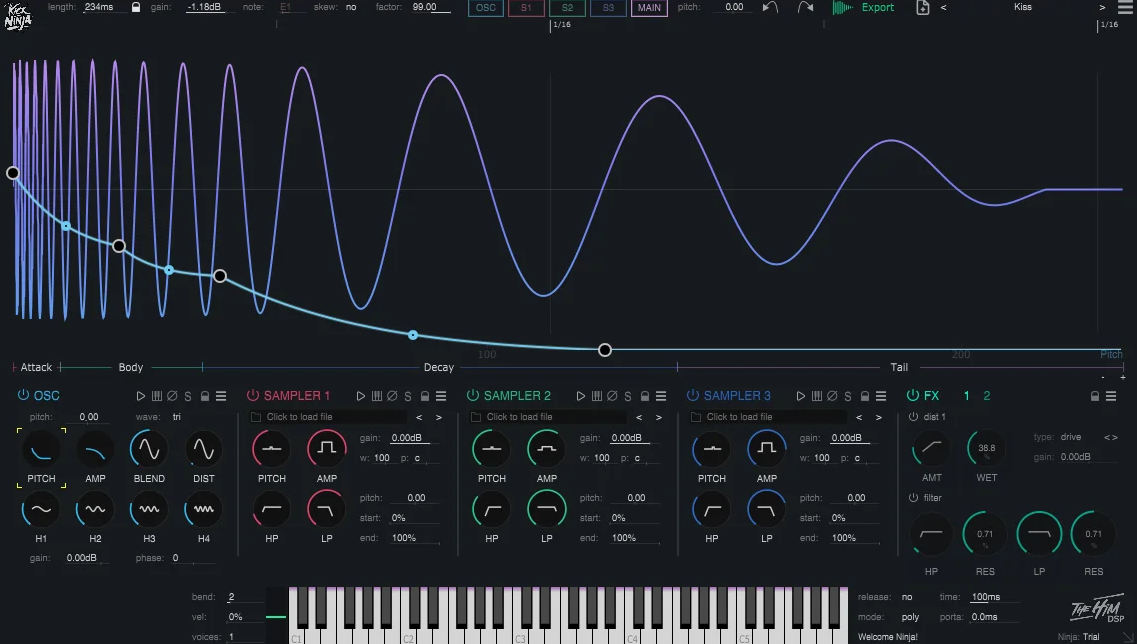
For producers obsessed with low-end precision, Kick Ninja by The Him DSP hits a sweet spot. Instead of layering samples, it synthesizes kicks from a modeled transient, body, and sub component, each driven by AI spectral estimation. You set your base frequency, and the engine predicts harmonic alignment up to 2 kHz.
The result is extremely consistent phase alignment and tight low-end control. I like tweaking decay slope and transient hardness to match genres – 35% slope and 60% transient for house, sharper settings for trap. It’s fast, sonically solid, and easy to tweak mid-session.
9. Waves CR8 Creative Sampler (Sampler)
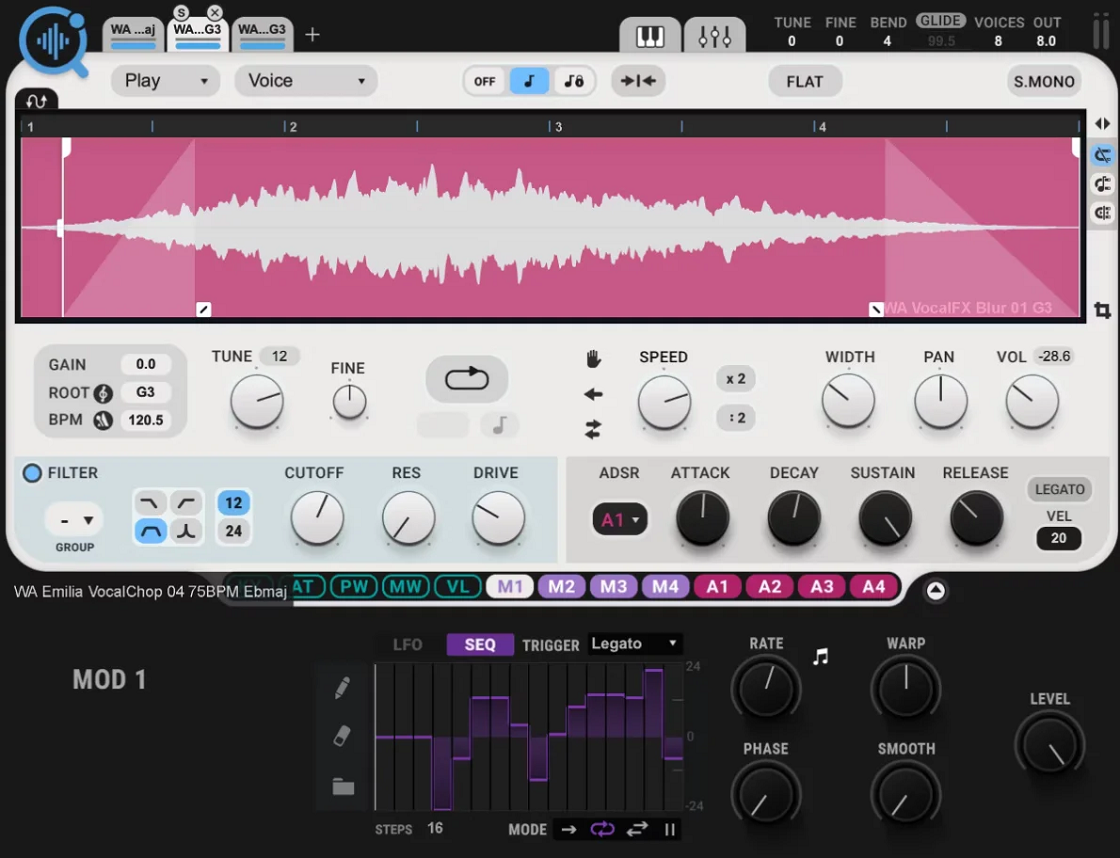
One sampler that really benefits from AI is Waves’ CR8 Creative Sampler. Drop any folder, and it auto-tags samples by transient shape, spectral profile, and perceived note center. You can then browse sonically, not by filenames.
The pitch algorithm, called Neural Elastique, supports ±48 semitone transposition without noticeable artifacts, and time-stretching remains phase-coherent even at extreme rates. It also offers up to eight modulation sources that can target almost any parameter. I’ve used it for building evolving textures from single hits – CR8 handles modulation with smooth transitions and almost no zipper noise.
10. iZotope Neoverb (Reverb)
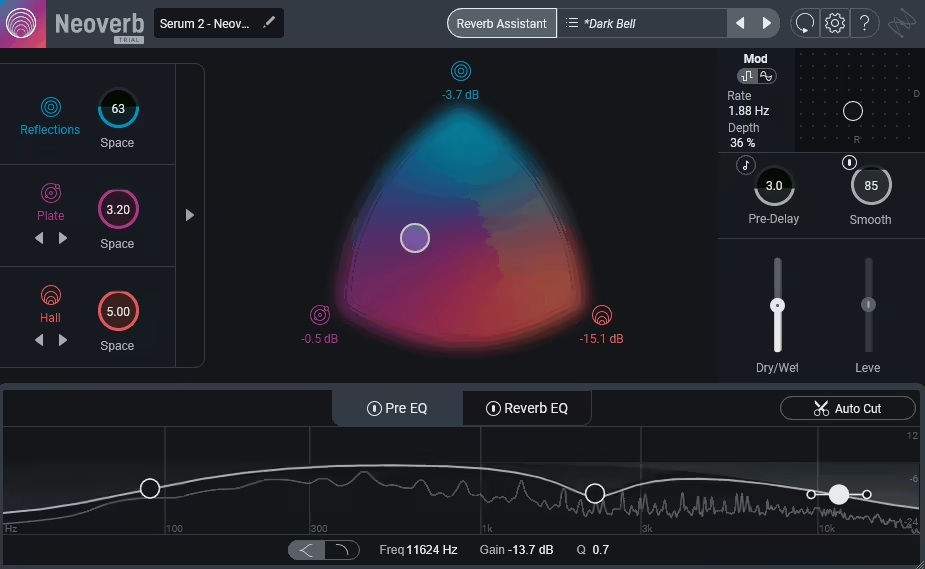
When I’m shaping spatial tone, iZotope’s Neoverb still feels like the most intelligent reverb around. It listens to your input signal, identifies density and transients, and recommends decay and pre-delay based on mix context.
The Blend Pad lets you morph between Room, Plate, and Hall algorithms while maintaining phase alignment. Its built-in Unmask EQ dynamically carves space for vocals or guitars so they sit naturally. The AI doesn’t override your taste; it enhances it.
I find 1.8 seconds decay with 30% blend perfect for pop vocals. It just sits right without ever clouding the mix.
11. Waves InTrigger (Drum replacer)
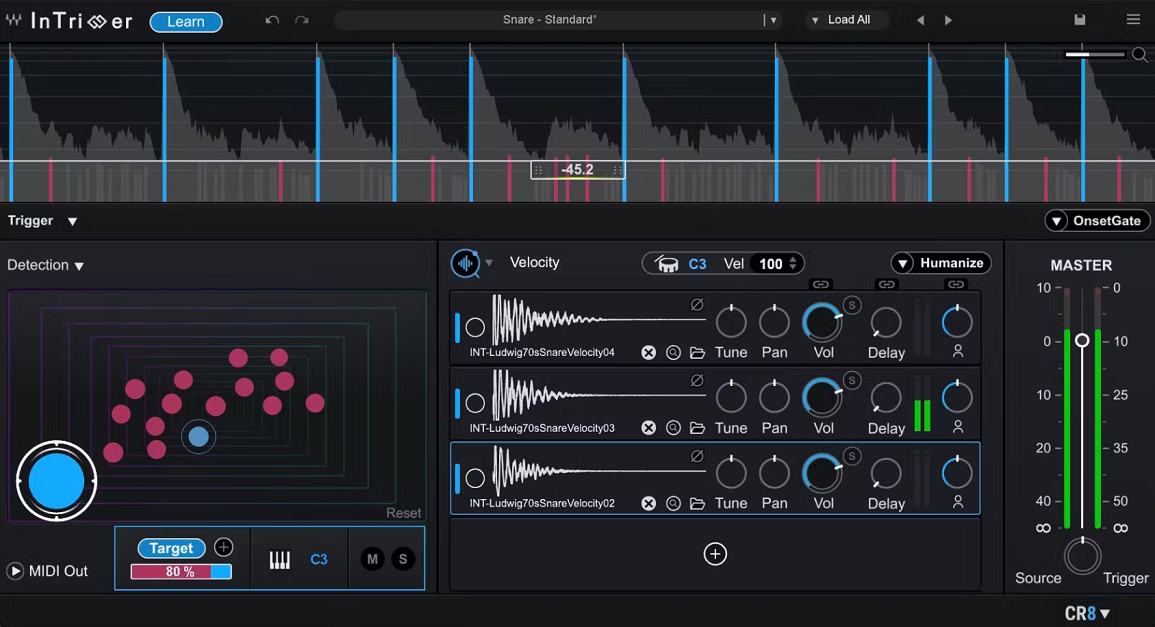
You wouldn’t think a drum replacer could feel this responsive, but Waves’ InTrigger proves it. It scans transients with millisecond accuracy and uses AI prediction to distinguish intentional hits from bleed. That means fewer false triggers and realistic dynamics.
You can train it on your own snare or kick samples, which tailors response for your playing style. I tested it on live drums recorded with open mics, and it hit 97-98% detection accuracy without needing threshold fine-tuning. Latency sits at around 3 ms, which is fast enough for tracking. It’s a genuine time-saver for drum editors.
12. Waves Clarity™ Vx Pro (Noise reduction)

It’s still kind of shocking how far Waves Clarity Vx Pro can push noise reduction without mangling tone.
Powered by their Neural Network V14 engine, it separates dialogue from noise in real time while preserving formant detail. There’s an adjustable focus control that rebalances spectral weighting after reduction, avoiding dullness.
I’ve used it on vocal recordings with HVAC rumble, and it cleaned it up without touching sibilance. It even works on live takes. The low-latency mode introduces almost no delay, which makes it a great fit for broadcast or live recording setups too.
13. Waves Curves AQ (autonomous Equalizer)
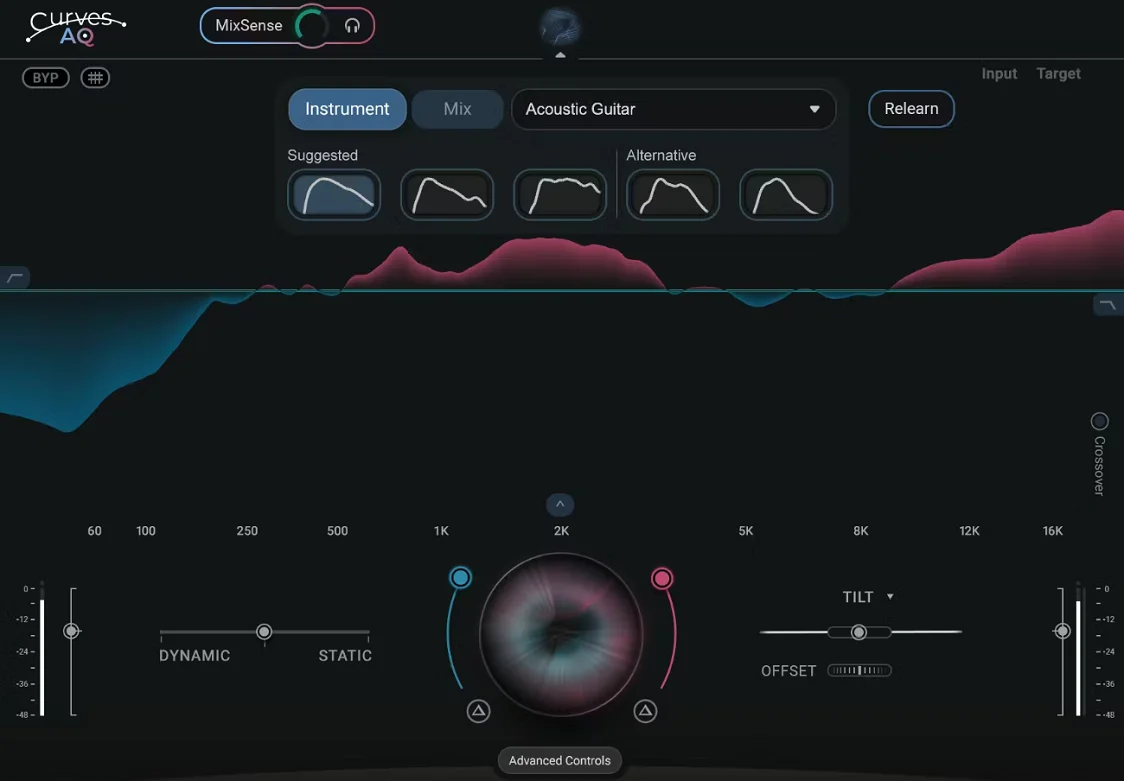
I didn’t expect Waves Curves AQ to feel so natural when EQing, but its adaptive filter system learns over time. It monitors incoming audio and automatically adjusts up to 24 bands in 0.1 dB steps to maintain tonal consistency.
You can see frequency movements in real time, and it does this with almost no phase shift due to 8x oversampling. It’s a mix-aware EQ that balances elements dynamically. I’ve found it ideal for bus processing where manual EQ would be too static. It’s subtle, continuous, and surprisingly musical.
14. Supertone CLEAR (de-noise & de-reverb tool)
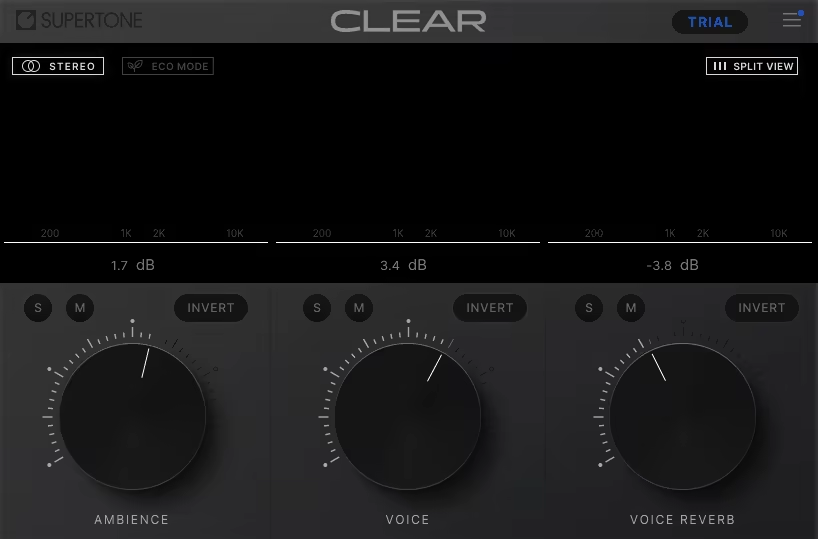
Most denoisers flatten transients, but Supertone CLEAR manages to preserve the attack while cleaning both noise and reverb. Its hybrid model combines a temporal gate and a spectral neural suppressor that adaptively blend for optimal reduction.
The engine works across 2048 spectral bands, processing in under 5 ms of latency. I ran it on vocal recordings tracked in a reverb-heavy room, and it retained presence and tone. It’s not aggressive or sterile – more like the signal naturally de-reverberates. For dialogue or acoustic music, this one feels indispensable.
15. Acon Digital Drum Production Suite (Drum processing)
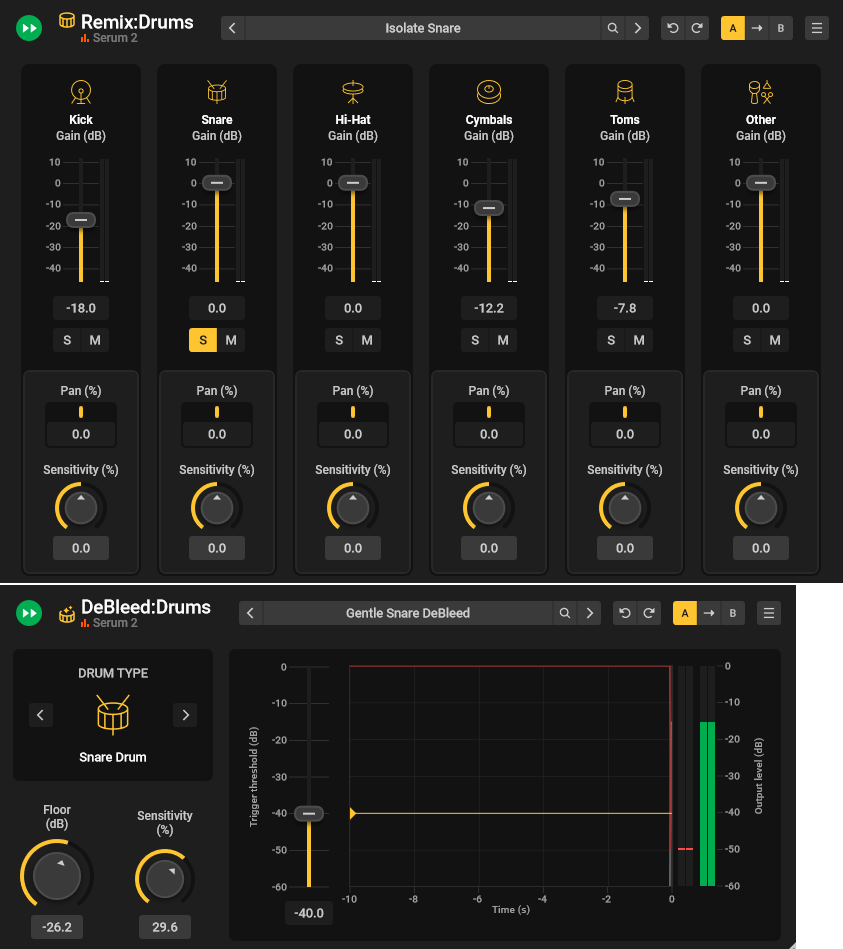
For drums that need attention beyond compression, Acon Digital’s Drum Production Suite feels like a toolkit built by someone who actually mixes drums daily. Each module – transient shaper, enhancer, and limiter – uses AI-assisted analysis to identify drum types and adjust parameters automatically.
The enhancer restores harmonic richness with psychoacoustic modeling, while the limiter soft-clips transients instead of squashing them. The result is drums that stay punchy but balanced. Everything feels calibrated for realism, not hype.
16. Accentize Chameleon 2 (Reverb imitator)
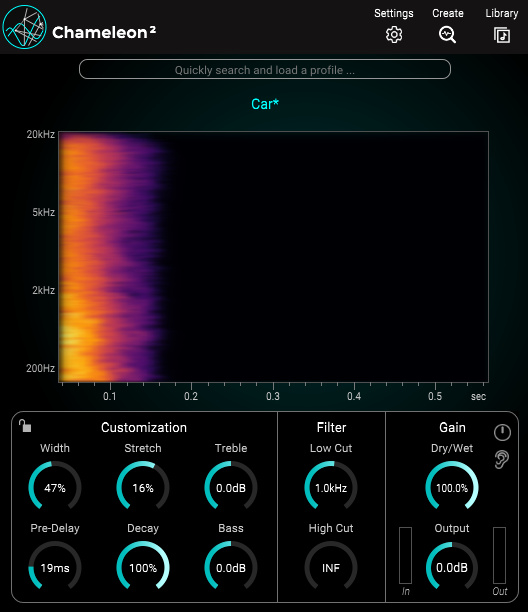
Chameleon 2 listens to a reference reverb recording, learns its spectral and temporal signature, and rebuilds an impulse response that matches it nearly perfectly – within ±0.2 dB in most tests.
You can blend between environments on a slider, morphing from a small room to a cathedral in real time. For sound designers and film mixers, it’s a creative goldmine, definitely check this one out!

We are plugin nerds (just like you!). We made this website to keep you updated on the latest trends, news and everything plugin related.

